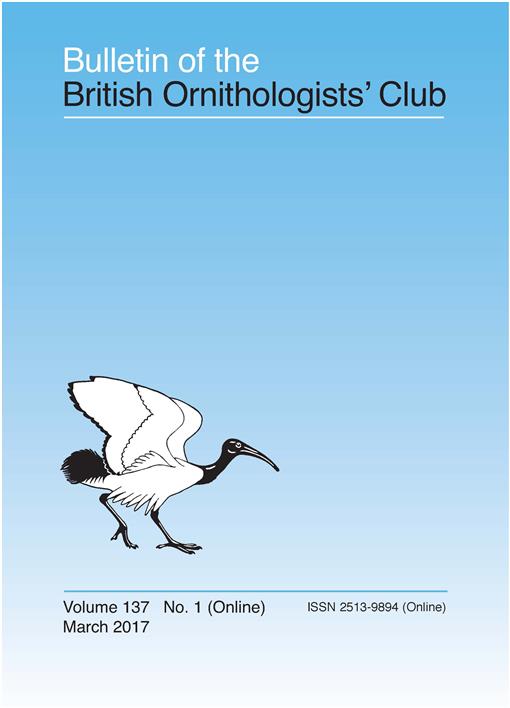Buff-fronted Owl Aegolius harrisii is one of 22 species of Strigidae in Brazil (Sick 1997). The species has a circum-Amazon range (Barlow & Cuello 1964, Fjeldså & Krabbe 1990, König et al. 1999, Barrionuevo et al. 2008, Ubaid et al. 2012) and is found from sea level to 3,800 m (Lima & Castro 1994, Marks et al. 1999, Bravo & Barrio 2014). In Brazil, isolated records indicate that A. harrisii is distributed throughout most of the east of the country (Kaminski 2009, Santos 2009, Rebelato et al. 2011, Ubaid et al. 2012, Santos et al. 2014). Here we present the first record of A. harrisii in the state of Sergipe, extending the species' known distribution at least 100 km from the nearest localities in Alagoas and Bahia (WikiAves 2016; Fig. 1).
Figure 1.
Present record (star) and isolated records (WikiAves 2016) of Buff-fronted Owl Aegolius harrisii from north-east Brazil and its current distributional polygon (in grey) following BirdLife International (2017).

A Buff-fronted Owl was found near Parque dos Falcões, municipality of Itabaiana, Sergipe (10°44′S, 37°22′W) in November 2014. The local ecosystem is characteristic of the more open environments at the ecotone between Atlantic Forest and Caatinga. The bird was taken to the park, where it was examined and found to be in good health. We measured its wing (125 mm), total length (19.5 cm) and body mass (140 g). The owl was placed in a mobile enclosure, where it remains in quarantine, and has been registered with IBAMA, the Brazilian federal environment agency (ring no. 173).
In addition, we also observed that the individual possesses an uncommon condition in birds, Heterochromia iridis, or different-coloured irides. The right iris is pale yellowish, whereas the left is orange-yellow (Fig. 2). Heterochromia iridis can occurs in more than 7% of individuals in some vertebrate species (e.g., horses, pigs and buffalo) (Gelatt et al. 1973, Misk et al. 1998), but few cases have been reported in birds and this appears to be the first pertaining to Strigidae. Given the lack of data for birds, it is unclear whether this condition relates to an inflammation, degeneration of the iris, or some other abnormality.
Figure 2.
Heterochromia iridis in Buff-fronted Owl Aegolius harrisii at Parque dos Falcões, Itabaiana, Sergipe, Brazil (Juan Ruiz-Esparza)

A. harrisii appears to be relatively rare, and is poorly known in museum collections (Studer & Teixeira 1994, Marks et al. 1999), which hampers systematic analysis of its biology or distribution. The available records do, however, suggest that the species is uncommon and patchily distributed (Stotz et al. 1996). While few records are available from north-east Brazil, mainly from Ceará (Table 1), they indicate that the species is perhaps adapted to the arid Caatinga, and may be a habitat generalist. The present record, together with other recent records (WikiAves 2016), indicates a much more ample distribution than that given by BirdLife International (2017).
TABLE 1
Records of Buff-fronted Owl Aegolius harrisii in north-east Brazil.

Acknowledgements
We are grateful to CNPq for research grants to JR-E (151121/2014-1, 402582/2015-2), RB-M (503372/2014-5) and SFF (303994/2011-8, 483220/2013-2), PNPD / CAPES-UFS for a research grant to DPBR-E (2141161), and CAPES for a postdoctoral grant to SFF (99999.001536/2015-00). We also thank the Mohamed bin Zayed Species Conservation Fund (12055114), Primate Action Fund (1001257) and Primate Conservation Inc. (1158) for supporting RB-M. Luis Fabio Silveira, Glauco Pereira and Jeff Marks provided essential comments on the submitted manuscript.





